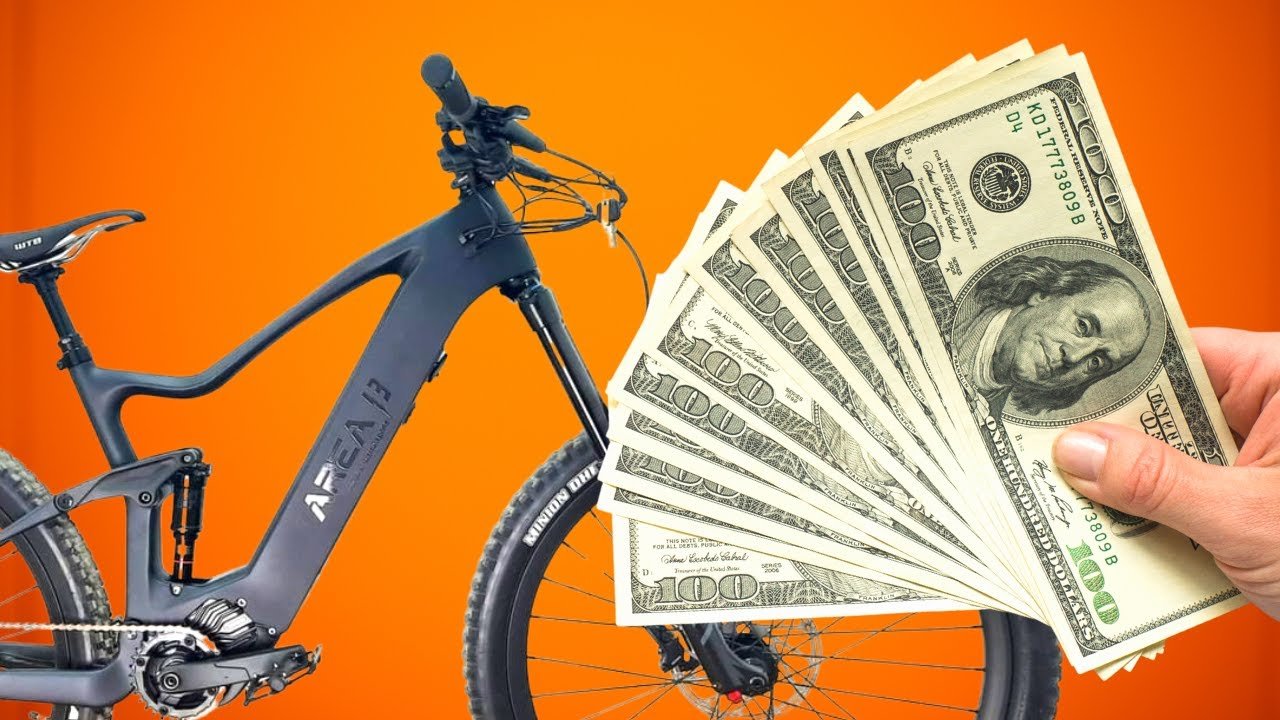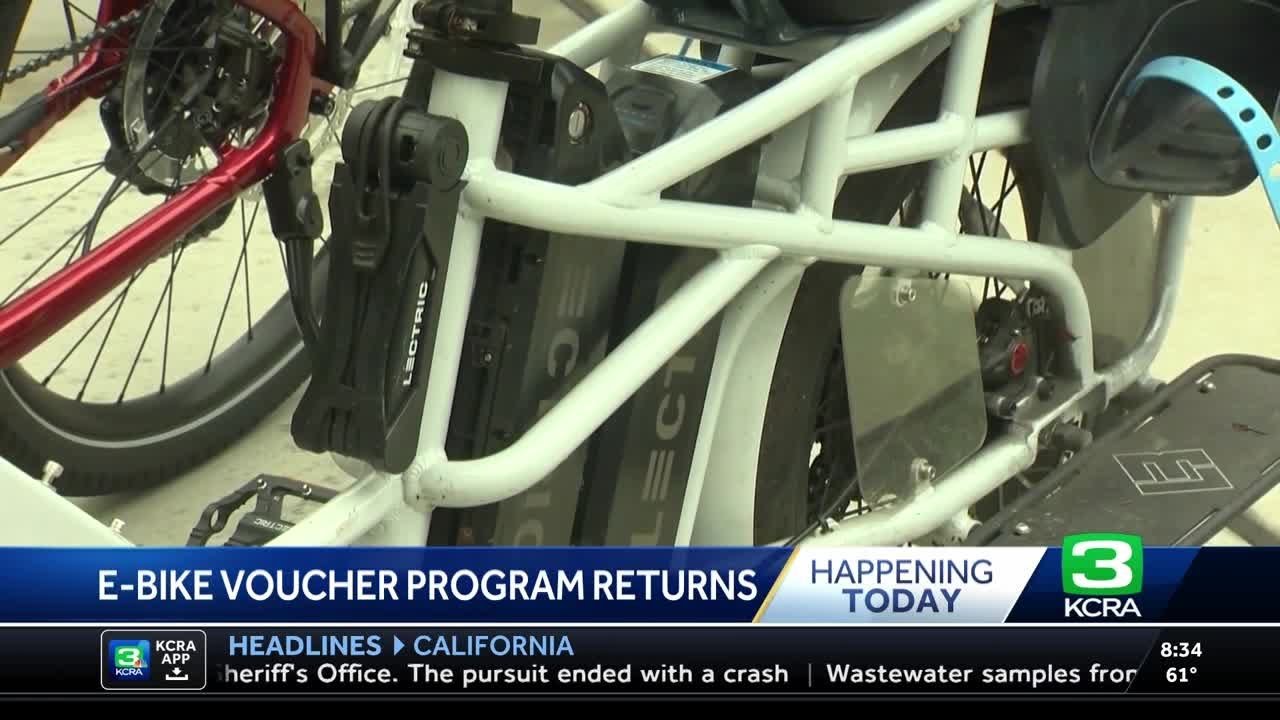![[year] E-Bike Rebates & Incentives: US, Canada, UK & EU (Updated Guide) 2025 E-Bike Rebates Explained: Where to Apply and How to Max Your Savings](https://goebikelife.com/wp-content/uploads/2025/09/E-Bike-Rebates-Explained.jpg)
E-bikes are becoming more popular every year, and governments are stepping in to make them easier to afford. With 2025 bringing new rebates, subsidies, and tax incentives across the United States, Canada, the UK, and the EU, it’s the perfect time to understand what financial support is available.
In 2025, e-bike incentives include rebates, vouchers, and tax credits offered by federal, state, provincial, and local programs across North America and Europe, all designed to lower the upfront cost of purchase and encourage wider adoption of electric bicycles.
This guide will break down how rebates work, highlight federal and local programs, and compare opportunities across Canada, the UK, and the EU. It will also show how to maximize savings and explain the environmental benefits behind these initiatives.
Understanding E-Bike Rebates & Incentives
E-bike rebates and incentives help lower the upfront cost of buying an electric bike, making them more affordable for everyday riders. These programs are designed to encourage people to choose cleaner transportation, reduce emissions, and improve access to reliable mobility.
They can take the form of direct discounts, post-purchase rebates, or vouchers that reduce the price at checkout.
What Are E-Bike Rebates?
An e-bike rebate is a financial incentive that reduces the cost of an electric bike. Instead of paying the full price, riders can get money back or receive a discount when purchasing from approved retailers.
Rebates are usually offered by state or local governments, utility companies, or city programs. The exact savings vary widely. For example, California provides up to $2,000 for low-income residents, while Vermont offers up to $400 based on income through its Drive Electric Vermont E-Bike Incentives.
These programs make an affordable electric bike more accessible to people who might otherwise find the price too high. By lowering the barrier to entry, they encourage more riders to switch from cars to bikes.
Some rebates apply only to standard e-bikes, while others also cover cargo e-bikes, which are designed to carry heavier loads like groceries or kids.
How E-Bike Incentive Programs Work
E-bike incentive programs usually operate in one of two ways: instant discounts at the point of sale or rebates that are claimed after purchase. Instant discounts reduce the price immediately, while rebates require paperwork and proof of purchase.
Most programs also limit where the e-bike can be purchased. Approved retailers are often listed on the program’s website. This ensures the bike meets safety and quality standards.
Here’s a quick comparison of how programs are structured:
| Program Type | How It Works | Example Amounts |
|---|---|---|
| Instant Discount | Price reduced at checkout | $300–$1,200 |
| Post-Purchase Rebate | Apply after purchase with receipt | $400–$2,000 |
| Voucher | Credit given before purchase | $500–$1,000 |
Some programs also cover accessories like helmets or locks. For instance, Massachusetts adds an extra $150 for safety gear under its E-Bike Rebate Program.
Eligibility Criteria for E-Bike Savings
Eligibility depends on income, residency, and sometimes the type of e-bike being purchased. Many states prioritize low- and moderate-income households, offering them larger rebates.
Applicants usually need to show proof of residency, such as a utility bill or driver’s license. Some programs also require income verification through tax documents.
Common requirements include:
- Must be a resident of the state or city offering the program
- Must purchase from an approved retailer
- Must apply within a set time frame (often 30–60 days)
- Must meet income eligibility if applying for higher rebates
For example, Colorado offers up to $1,200 for income-qualified residents, while Washington, D.C. provides up to $2,000 for cargo e-bikes through its District E-Bike Incentive Program.
By setting clear criteria, these programs ensure the funds go to households and individuals who will benefit most from affordable electric bike access.
Federal E-Bike Incentives in 2025
Federal support for e-bikes in 2025 focuses on making them more affordable through tax credits and rebates. The main program comes from the E-BIKE Act, which aims to reduce costs for everyday riders while encouraging cleaner transportation.
Overview of the E-BIKE Act
The Electric Bicycle Incentive Kickstart for the Environment (E-BIKE) Act is the main federal proposal in the United States. It was first introduced in Congress in 2021 and has been updated several times to reflect new climate and transportation goals.
The Act creates a tax credit for new e-bike purchases. Unlike state rebates, this one applies nationwide, so residents in every state can benefit if the bill passes and funding continues. The goal is to make e-bikes more accessible to middle- and lower-income households.
Supporters argue that e-bikes help cut car trips, reduce emissions, and improve mobility in cities. The Act specifically targets Class 1, 2, and 3 e-bikes, which are the most common consumer models. This ensures that the incentive applies to the types of bikes people actually buy and use.
Federal E-Bike Tax Credit Details
The federal e-bike tax credit covers 30% of the purchase price of a new e-bike, up to $1,500 per bike. This means a $2,000 e-bike could qualify for a $600 credit, while a $5,000 bike would max out at the $1,500 cap.
The credit is refundable, which means even those with low tax bills can still benefit. However, there are income limits to prevent high earners from claiming it. For example:
- Single filers: phased out after $75,000 income
- Head of household: phased out after $112,500 income
- Joint filers: phased out after $150,000 income
Only new e-bikes qualify, and the bike must meet U.S. safety standards. Accessories such as helmets or locks are not included. The Act is designed to focus strictly on the bike itself.
How to Claim Federal E-Bike Benefits
Claiming the e-bike credit works much like other federal tax credits. Buyers keep their purchase receipt and then file the claim when submitting their annual tax return. The credit reduces the amount owed or increases the refund.
The process is expected to use IRS Form 8936, the same form currently used for clean vehicle credits. Tax software should also include the credit once it becomes active. This makes it easier for most people to claim without special help.
Steps to claim:
- Buy a qualifying new e-bike.
- Save the receipt and note the bike’s classification (Class 1–3).
- File taxes using Form 8936 or tax software.
- Apply the 30% credit, up to $1,500, based on purchase price.
This system ensures that the benefit is tied directly to federal tax filings, making it consistent and trackable across the country.
United States State and Local E-Bike Programs
Across the U.S., e-bike rebates and vouchers can make a big difference in affordability. Some states run large-scale programs that prioritize low-income households, while many cities and utilities offer their own incentives to fill in the gaps. Together, these programs help more people replace short car trips with electric-assisted rides.
Major Statewide E-Bike Rebates
Several states now fund e-bike incentive programs with clear income-based tiers. California’s E-Bike Incentive Project, backed by the California Air Resources Board (CARB), provides up to $2,000 for residents in disadvantaged communities. Colorado and Massachusetts also stand out with rebates of $800–$1,200, with higher amounts for income-qualified riders.
Minnesota offers up to $1,500, covering 50–75% of the purchase price depending on income. Connecticut provides a $500 base voucher with up to $1,250 available for lower-income households. These rebates often require applications through state portals and proof of residency.
Here’s a quick look at some 2025 statewide programs:
| State | Max Rebate | Eligibility Highlights |
|---|---|---|
| California | $2,000 | Low-income, disadvantaged areas |
| Colorado | $1,200 | Income-qualified residents |
| Massachusetts | $1,200 | Income-based, plus $150 accessories |
| Minnesota | $1,500 | Covers 50–75% of cost |
| Connecticut | $1,250 | Voucher, income-based |
More details on these programs are available at state-by-state e-bike rebates.
Local E-Bike Incentives & Vouchers
Not every state funds a rebate, but many cities and utilities have stepped in. Austin Energy’s E-Ride Rebate offers up to $1,300 for income-qualified customers, while San Antonio runs a voucher program worth $1,000 funded by federal grants. Denton Municipal Electric provides up to $1,000 or 50% of the bike’s price.
These local programs often work directly with bike shops, making the discount immediate at checkout. Unlike statewide rebates, which may require waiting for reimbursement, utility and city incentives can reduce upfront costs.
Residents should also check smaller cities like Atlanta and Raleigh, which have launched their own pilot efforts. Because funding is limited, these programs usually run on a first-come, first-served basis.
Stacking Federal, State, and Local Savings
In 2025, there is no permanent federal e-bike tax credit, but proposals continue to circulate in Congress. If reintroduced, a federal credit could be combined with state rebates and local vouchers, creating layered savings.
For example, a rider in California could combine a $2,000 CARB rebate with a $600 Austin Energy-style local program if living in a city with both options. That could cut $2,600 off the purchase price of a new e-bike.
The key is to check eligibility rules. Some programs cannot be stacked if they use the same funding source, while others encourage combining benefits. Applicants should track deadlines and apply early, since most programs cap funding.
When stacked correctly, these incentives can reduce the cost of a reliable commuter e-bike to less than half the retail price, making it easier for more people to make the switch.
E-Bike Rebates & Incentives in Canada
Canada has stepped up with a mix of national and regional programs that make e-bikes more affordable. Some provinces focus on flat rebates, while others tie incentives to income or bike type. Several cities also run their own programs, adding even more ways to save.
National and Provincial E-Bike Programs
Most e-bike incentives in Canada are run at the provincial level. For example, British Columbia’s CleanBC Go Electric Rebates help businesses and organizations buy cargo e-bikes, though individuals don’t qualify for this specific stream. Nova Scotia offers a $500 rebate on e-bikes priced between $1,200 and $10,000, but the bike must come from a local retailer.
Prince Edward Island also provides a $500 rebate for residents and organizations, with businesses and non-profits eligible for up to five rebates each year. In the Yukon, the Clean Energy Rebate covers 25% of the cost, up to $750 for standard e-bikes and $1,500 for cargo models.
Here’s a quick breakdown:
| Province/Territory | Rebate Amount | Eligibility |
|---|---|---|
| Nova Scotia | $500 | Residents, local dealers only |
| Prince Edward Island | $500 (up to 5 for orgs) | Residents, businesses, non-profits |
| Yukon | 25% up to $750/$1,500 | Residents + businesses |
| British Columbia | Varies | Businesses, non-profits, public orgs |
More details on these programs can be found in Tern’s 2024–2025 e-bike incentive guide.
Key Canadian City Incentives
Some municipalities also run their own e-bike rebate programs to push sustainable transportation at the local level. For example, Vancouver has offered pilot projects that support e-cargo bike adoption for businesses making urban deliveries. These programs aim to cut traffic and emissions in dense downtown areas.
In Toronto, city-led initiatives have focused more on cycling infrastructure, but non-profits have occasionally partnered with the city to offer small-scale e-bike rebates. Calgary and Edmonton have explored similar programs, often targeting delivery fleets or community organizations rather than individuals.
Local incentives usually come in limited rounds with capped funding. That means residents need to apply quickly once applications open. While amounts vary, rebates typically range between $300–$750 per bike, depending on the city’s budget and goals.
For a broader view of city-level incentives across North America, Portland State University maintains an online tracker of e-bike programs. This tool helps riders check whether their city or region currently offers rebates or has proposals in the works.
E-Bike Incentives in the UK
The UK has fewer direct e-bike rebates compared to countries like France or Germany, but some financial support still exists. Most programs focus on workplace schemes or local authority projects rather than nationwide grants.
Current UK E-Bike Rebate Schemes
At the national level, there is no government-funded grant for buying a new e-bike. Unlike electric cars, vans, or motorcycles, e-bikes do not qualify for a direct purchase subsidy. Instead, the main financial relief comes through the Cycle to Work scheme.
This program lets employees get an e-bike through salary sacrifice, which lowers the taxable income. Savings usually range from 25% to 39% depending on income tax bands. For many, this is the only consistent way to reduce upfront costs.
While this scheme works well for commuters, it doesn’t help everyone. Self-employed workers or those without access to the program miss out. This has led to criticism that e-bikes remain less accessible compared to other forms of eco-friendly transportation.
Key points:
- No national e-bike grant in the UK
- Cycle to Work scheme offers tax savings
- Savings range 25%–39% depending on income
- Limited access for self-employed or unemployed individuals
Local Authority and City Programs
Some councils and cities have stepped in with their own incentives. These vary widely, both in funding levels and eligibility. For example, certain pilot projects have offered discounts or vouchers to encourage residents to switch to e-bikes.
Local support often focuses on reducing congestion and improving air quality in cities. Programs may include short-term loans, trial schemes, or direct rebates on purchases. These are usually capped and available only for a limited time.
According to ETA, the UK still lags behind countries like France, Belgium, and Germany, where subsidies can reach hundreds of euros. However, some UK cities are experimenting with targeted programs, particularly in areas with poor air quality.
A quick comparison helps show the gap:
| Country/Region | Typical Incentive | Notes |
|---|---|---|
| France | Up to €400 grant | Some regions add extra funding |
| Germany | City-level subsidies | Munich and others offer rebates |
| UK | Cycle to Work scheme only | Local pilots vary, no national grant |
These local efforts show promise, but without a national program, access remains inconsistent. Some residents benefit from rebates, while others have no support at all.
EU E-Bike Subsidies and Programs
Across Europe, e-bike incentives have become a practical way to support sustainable transportation. Many governments and cities now offer rebates, tax breaks, or direct payments that make e-bikes more affordable and attractive for commuting and daily use.
These programs differ widely, with some targeting individuals while others focus on businesses or public institutions. The amount of support can range from small tax deductions to several hundred euros in direct rebates.
Overview of EU-Wide Incentives
At the EU level, there isn’t a single unified rebate program. Instead, funding often flows through member states or local governments. However, the European Union has supported cycling infrastructure and green mobility through climate and transportation funds, which indirectly boost e-bike adoption.
Local governments play the biggest role. For example, many cities provide direct cash rebates or percentage-based subsidies for electric and cargo bikes. Some regions even tie incentives to scrapping an old polluting car, rewarding residents for switching to cleaner transport.
A quick snapshot of common EU incentive types:
| Incentive Type | Typical Value | Who Qualifies |
|---|---|---|
| Direct rebate | €300–€1,100 | Residents, families, small businesses |
| Tax credit | Varies by country | Employees, companies |
| Mileage allowance | €0.20–€0.35 per km | Commuters using bikes for work |
| Company bike schemes | Tax-deductible | Employers & employees |
These measures reduce upfront costs and encourage everyday cycling. For details on active programs across multiple countries, Tern Bicycles provides a useful overview.
Country-Specific E-Bike Rebates
Austria’s Klimaaktiv program offers up to €900 for e-cargo bikes and €500 for folding e-bikes, while Vienna covers 50% of the purchase price up to €1,000. Salzburg also funds trailers and adaptive bikes for people with disabilities.
Belgium supports riders through a federal mileage allowance of up to €0.35 per kilometer, plus local rebates. Employers can also provide tax-free company bikes and cover related equipment.
Germany’s incentives vary by state. Stuttgart provides up to €1,100 for families buying e-cargo bikes, while North Rhine-Westphalia funds 25% of purchase costs for freight bikes, capped at €3,500.
Ireland’s Cycle to Work Scheme allows employees to buy e-bikes tax-free, with limits of €1,500 for standard e-bikes and €3,000 for cargo models. Italy, meanwhile, offers regional vouchers and even per-kilometer reimbursements in cities like Florence.
The Netherlands takes a tax route with its company bike scheme, where employees can lease bikes through work and benefit from reduced taxable income. For a broader look, Engwe Bikes highlights how some local programs even cover full costs for low-income riders.
Maximizing Your E-Bike Savings
Many riders can lower their e-bike purchase costs by stacking rebates, planning ahead, and picking a model that fits their lifestyle. Savings depend not only on government programs but also on smart shopping choices and knowing which features matter most.
Combining Multiple Incentives
Shoppers often overlook how local, state, and federal programs can work together. For example, someone in California might use a state rebate plus a local utility credit to cut hundreds of dollars from the upfront price. In Canada, provinces like British Columbia offer rebates that can be paired with municipal programs for even bigger savings.
Not every program allows “stacking,” so riders should always read the fine print. Some rebates apply only at checkout, while others require submitting receipts and waiting for reimbursement.
A simple way to track options is to make a list before buying:
- Federal or national rebates (where available)
- State/provincial programs
- Local city or utility incentives
- Retailer discounts or trade-in offers
By combining these, families can often move a cargo e-bike from “too expensive” to affordable.
Tips for a Successful E-Bike Purchase
Getting the most out of e-bike savings also means avoiding mistakes at the checkout. Buyers should always confirm that the model qualifies for the incentive before paying. Some programs exclude higher-speed bikes or those above a certain price cap.
It helps to set a budget that includes accessories like locks, helmets, and racks. These add-ons can add $200–$400 to the total cost. Planning ahead prevents surprises.
When possible, test ride bikes. Many shops apply rebates directly at the point of sale, but only if the paperwork is filled out correctly. Keep copies of receipts, rebate forms, and serial numbers in one folder.
A quick checklist before purchase:
- Confirm eligibility of the bike.
- Compare rebate deadlines.
- Ask the shop about instant discounts.
- Save all purchase documents.
Choosing the Right E-Bike Model
Not every affordable electric bike offers the same value. A commuter who rides short distances may be fine with a lightweight city model, while parents might need a cargo e-bike with room for kids or groceries. Picking the right style avoids wasting money on features that go unused.
Battery size also matters. A larger battery costs more but saves frustration if daily rides are long. Riders should compare range per charge against their typical travel distance.
To make the decision easier, here’s a quick comparison:
| E-Bike Type | Best For | Typical Price Range | Eligible for Rebates?* |
|---|---|---|---|
| City/Commuter | Short daily rides | $1,200–$2,500 | Often |
| Cargo E-Bike | Families, deliveries | $2,500–$5,000 | Usually, but capped |
| Folding E-Bike | Apartment storage | $1,000–$2,200 | Sometimes |
*Eligibility depends on local program rules.
By matching the model to actual needs, riders avoid overspending and make the most of available incentives.
The Environmental Impact of E-Bike Incentives
E-bike rebates do more than save people money. They also cut harmful emissions and encourage eco-friendly transportation choices that make cities cleaner and healthier.
Reducing Your Carbon Footprint
Every mile on an e-bike instead of a car lowers greenhouse gas emissions. A typical passenger vehicle produces about 404 grams of CO₂ per mile (EPA). An e-bike, by comparison, uses only a fraction of that since it runs on electricity and human power.
For short trips under five miles, which make up nearly 60% of U.S. car trips (Bureau of Transportation Statistics), swapping to an e-bike can slash emissions instantly. These short trips are also where gas engines are least efficient, so the environmental gain is even bigger.
To put it simply:
- Car (per mile): ~404 g CO₂
- E-Bike (per mile): ~22 g CO₂ (from electricity use)
- Walking: 0 g CO₂ (but slower!)
Even when charging from a grid that still uses fossil fuels, e-bikes remain far cleaner than cars. The difference grows in regions with renewable energy.
Promoting Sustainable Transportation
E-bike incentives push people toward sustainable transportation by making it cheaper and more practical. Rebates lower the upfront cost, which helps more riders choose an e-bike instead of a second car.
Cities that support e-bikes also see less congestion and better air quality. More bikes on the road mean fewer cars idling in traffic, which reduces both emissions and noise pollution.
Incentives also encourage a shift in how people think about daily travel. Instead of defaulting to a car, riders start to see e-bikes as a normal, eco-friendly option. This shift supports long-term goals like cutting urban emissions and meeting climate targets set by governments across the U.S., Canada, the UK, and the EU.
When paired with bike lanes and safe infrastructure, these programs can transform commuting habits. They make sustainable transportation not just possible, but convenient and appealing.
Frequently Asked Questions
E-bike rebates and tax credits in 2025 vary a lot depending on where someone lives. Some states and provinces have active programs, while others are still debating new bills. Federal proposals also keep popping up, but not all of them have crossed the finish line yet.
How do I snag that sweet e-bike tax credit I’ve heard all about?
Right now, the U.S. federal government does not have a nationwide e-bike tax credit in place. The E-BIKE Act proposed one, but it hasn’t been signed into law.
Instead, riders usually need to check state or local programs. For example, Colorado and California both offer rebates that can cut costs by several hundred dollars.
Are there any fresh e-bike rebates in Florida for this sun-soaked year of 2025?
Florida does not currently have a statewide e-bike rebate or tax credit. Cities like Miami and Tampa sometimes run smaller pilot programs, but nothing is active statewide in 2025.
Shoppers in Florida may want to look for utility company incentives or retailer discounts, since those pop up more often than government-backed rebates.
What’s the scoop on Minnesota’s e-bike rebate program this year?
Minnesota launched a new e-bike rebate program in 2024, and it continues in 2025. The program offers up to $1,500 off depending on income level.
The state set aside $2 million annually for rebates, so funding is limited. Applications usually open in the summer, and demand is high.
| Income Level | Max Rebate | Notes |
|---|---|---|
| Under $25k | $1,500 | Highest rebate tier |
| $25k–$50k | $1,200 | Moderate rebate |
| $50k+ | $1,000 | Standard rebate |
Can my grandpa get in on the e-bike action with a government subsidy?
Yes, age doesn’t block anyone from applying. If a person meets the income and residency rules, they can qualify.
Some programs even prioritize lower-income households, which could help retirees on fixed incomes. Grandpa just needs to apply like everyone else.
Is there an easy-peasy way to claim an e-bike tax credit online?
If it’s a state rebate, most applications happen online through an official portal. For example, Minnesota and California let residents submit forms digitally.
If a program is structured as a point-of-sale rebate, the discount happens right at the bike shop checkout, no paperwork later. Always confirm the process before buying.
Did the Electric Bicycle Incentive Kickstart for the Environment (E-BIKE) Act just make my cycling dreams come true?
Not yet. The E-BIKE Act has been introduced in Congress multiple times since 2021, most recently in 2023. It proposed a 30% federal tax credit for new e-bikes, capped at $1,500.
As of September 2025, the bill has not passed into law. Riders still need to rely on state and local programs instead.










